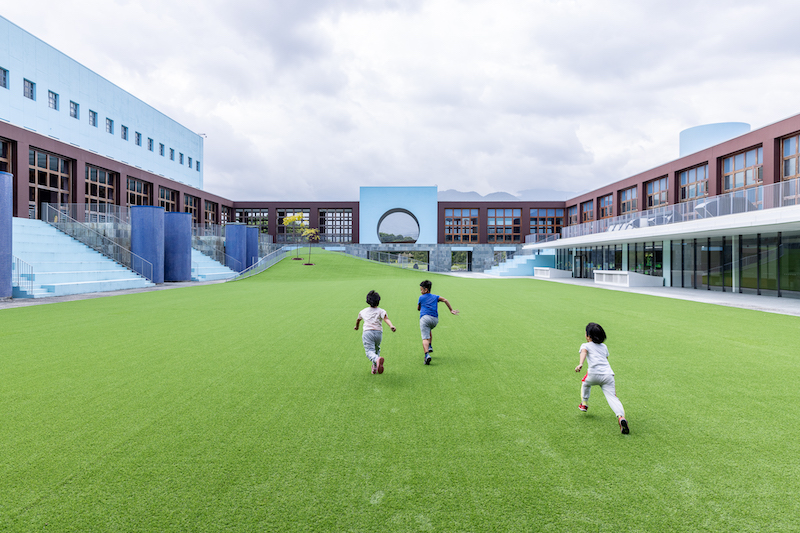【博物之島新訊】Striving for Accessibility and Social Issues: Re-Opening of the New Permanent Exhibitions of National Museum of Prehistory
The National Museum of Prehistory in Taiwan reopened on May 19, 2023. The architectural space has been reimagined with the concepts of “accessibility" and “fluidity," creating a transparent and comfortable visiting route and experiential space. The image shows the courtyard plaza of the museum. (Provided by the National Museum of Prehistory)
Reporters: Kuan-Ting, Kuo & Chia-Yu, Yeh(Editorial Office of Home and Abroad, Museum Island by Ministry of Culture)
Translator: Chi-Yiu Billy, Cheung (Postgraduate, Graduate Institute of Museum Studies, TNUA)
The National Museum of Prehistory (NMP) underwent nearly three years of architectural reconstruction and updates to its permanent exhibitions. On May 19, 2023, the reopening ceremony was held under the theme of “Encounters: Taiwan and the World." The renovation focused on the complete revamping of the “The Prehistory of Taiwan" and the “Austronesian Hall," as well as the addition of the interactive “Discovery Hall" for parent-child learning. With these significant changes, The NMP aims to locate itself as a hub for exploring Taiwan’s history and Austronesian culture with these changes.
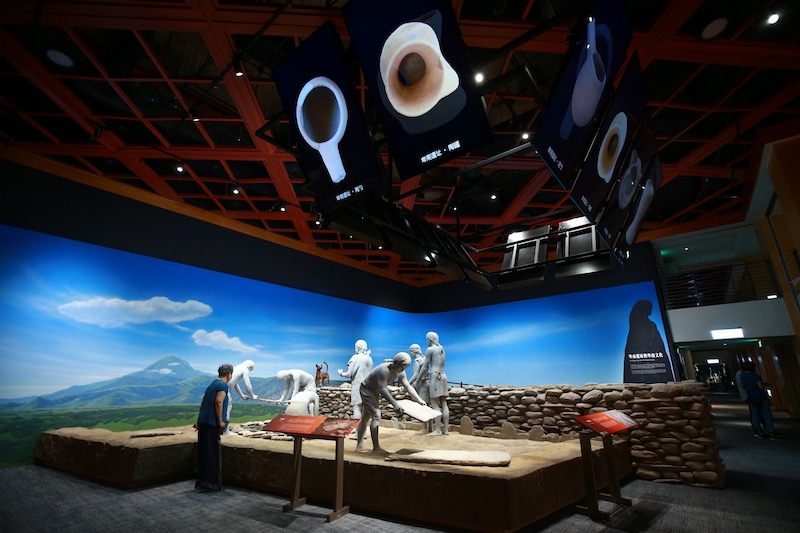
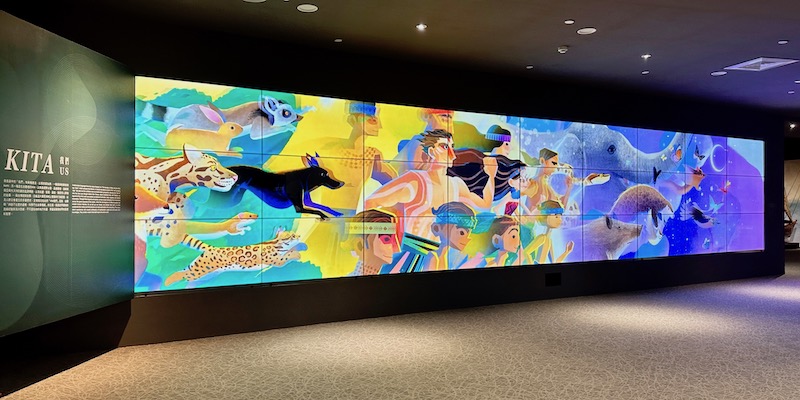
Renovations after 22 Years: Highlights and Details
The Prehistory Museum’s update this time actively implements the concept of accessibility. It includes multiple touchable navigation maps within the museum to provide guidance for diverse audiences. Display cabinets are also equipped with Braille and audio navigation symbols, allowing users to physically touch and scan for oral and visual descriptions of the artifacts. Additionally, the new permanent exhibition areas are accompanied by 3D-printed auxiliary objects corresponding to the displayed content. Visitors are more willingly to engage and experience the artifacts up close. This encourages visitors to engage with and closely experience the artifacts, gaining a deeper understanding of the intricate details through tactile exploration.
Upon entering the new permanent exhibition halls, we can observe various art creations and multimedia interactive installations that respond to interdisciplinary themes. For instance, in “The Prehistory of Taiwan", the wooden sculpture artwork “Sea Breeze" by artist Han Xudong vividly portrays the fearless spirit of Austronesian people sailing with the wind, seeking new horizons. Through multimedia interactive games, visitors can experience how prehistoric humans used tools and gain an understanding of the functionality of prehistoric artifacts. In the “Austronesian Hall”, the artwork “Lies ‧ Cans" by Tao artist Flying Fish (Siyan Matnowa Misega) reflects the anger, helplessness, and relentless resistance of the Orchid Island community facing the nuclear waste and environmental justice issues.
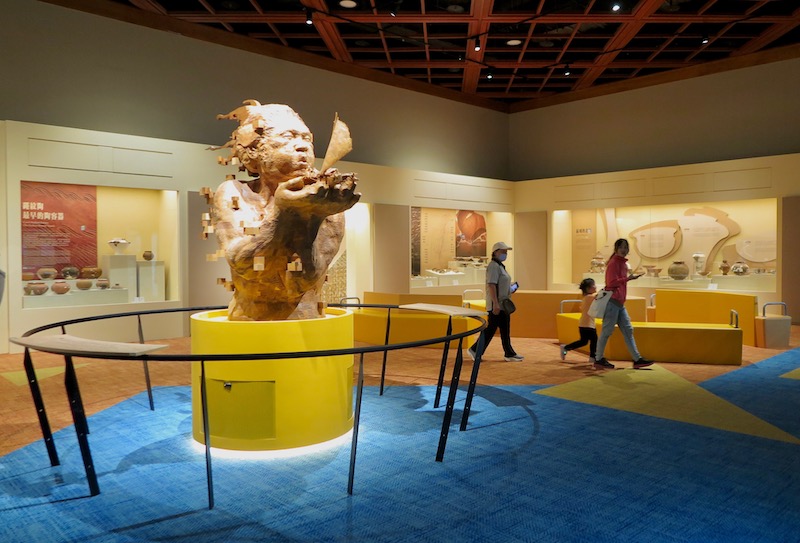
Response and Communication on Social Issues
The new permanent exhibitions are also responding to contemporary museum trends by addressing societal issues. In particular, the Austronesian Hall delves into the contemporary challenges faced by Taiwan, Southeast Asia, and Pacific islands.
Through the artwork “Sashimi" by Amis artist Chih-Ming, Fan, which is made from tuna cans, the exhibition conveys the issues of depleted marine resources and the drastic changes experienced by indigenous communities due to global capitalism and industrial development. It also highlights the haze and ecological imbalance caused by the palm oil industry in Southeast Asia, shedding light on the extensive environmental damage caused by multinational corporate products. The exhibition brings attention to the dark side of global development, including the Pacific garbage patch. The exhibition also addresses the looming crises of extreme climate events and rising sea levels. By showcasing a Godzilla monster model representing radioactive pollution, the exhibition reveals the suffering imposed on Austronesian communities, such as the nuclear waste storage in Orchid Island and nuclear testing conducted by Western countries in Pacific islands. This emphasizes the urgent need for discussions and changes regarding climate and environmental justice.
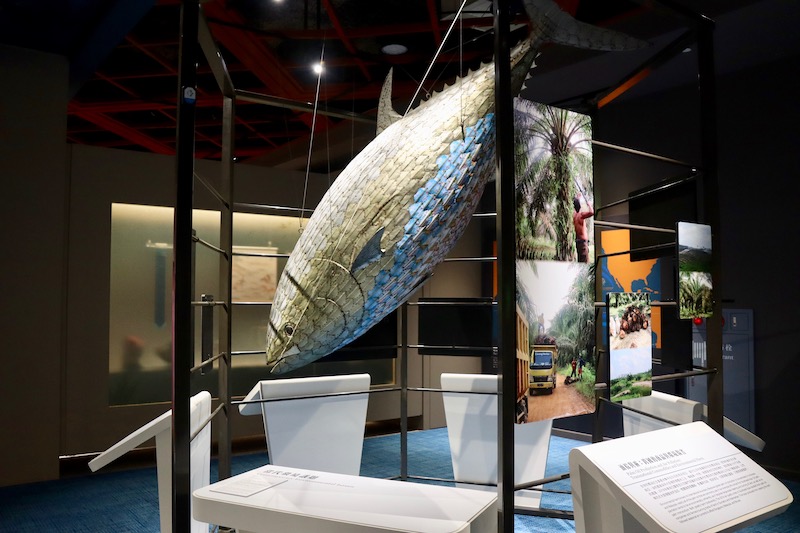
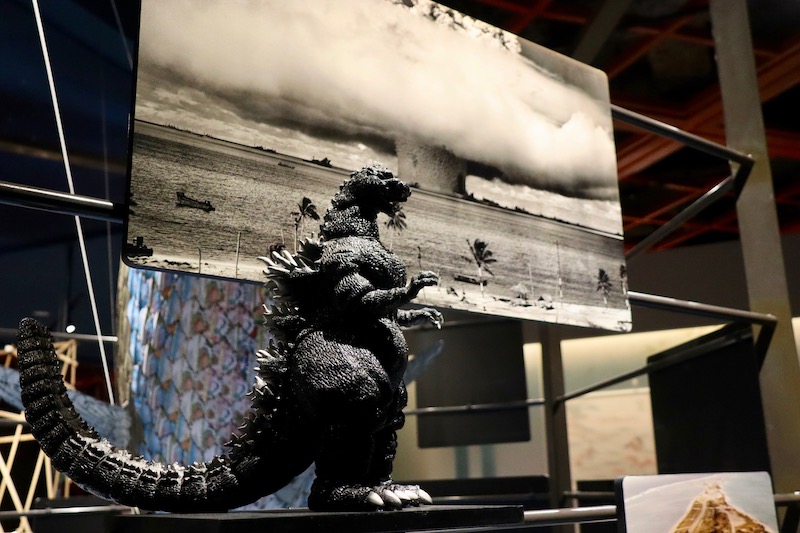
Furthermore, the exhibitions also shed light on overlooked labor rights issues faced by Taiwanese indigenous peoples and Austronesian communities through the use of construction site and deep-sea fishing boat settings. In the “Borders" section, an interactive map highlights the existence of the third gender in Polynesian traditional cultures, emphasizing the natural and longstanding presence of diverse gender identities within communities.
In the sub-theme “Lost Mountain Communities" of the “The Prehistory of Taiwan", the importance of preserving cultural heritage was emphasized. Through interview footages with the elder in the community and the reconstruction of a large slate house from the “Gaotu Village" in Mudan Township, Pingtung County, the exhibition traces the migration and cultural practices of the indigenous people. The fragmented and uncertain memories of the interviewees reflect the urgent need for investigation and documentation to preserve the historical information of these mountain communities. By addressing these social issues and integrating artworks with the content, the museum hopes to inspire reflection and empower visitors to instigate positive changes.
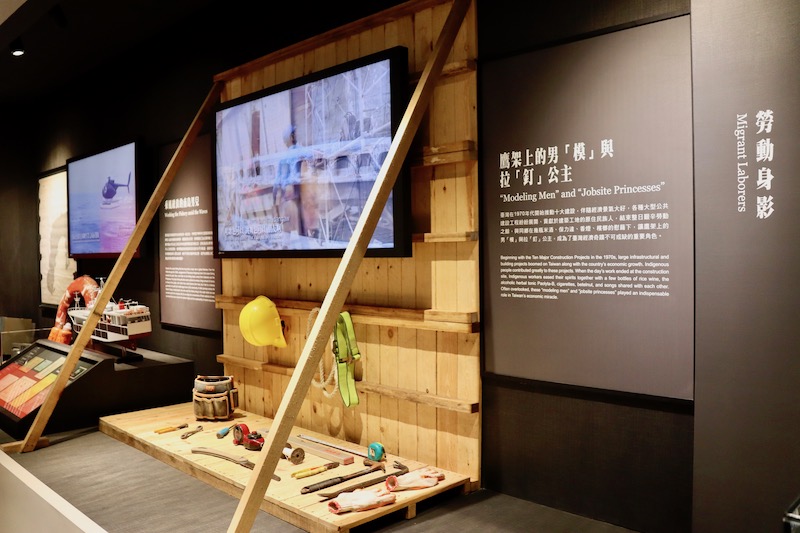
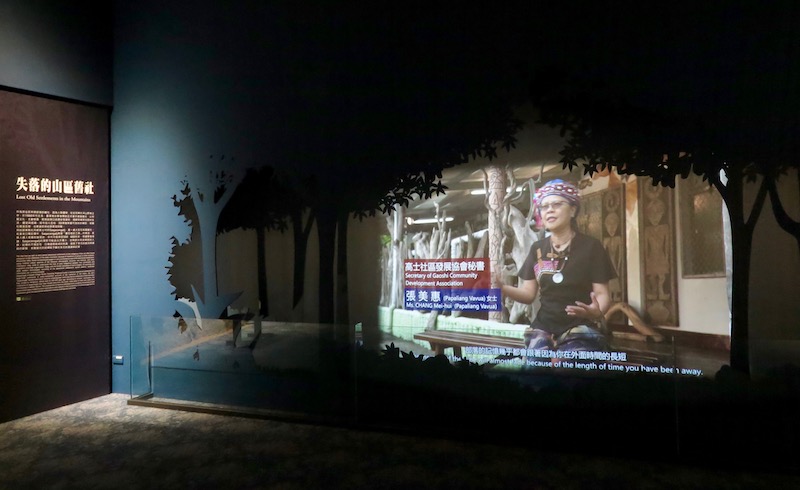
The Exploration Hall: A New Base for Diverse Children’s Learning!
The Exploration Hall consists of two floors. On the first floor, the “Empathy: Stories on the Move" exhibition connects cases from the United States, Canada, and Taiwan, explore in-depth topics such as indigenous migration and assimilation policies through children’s picture books. With parent-child guides and teacher’s facilitation, this exhibition facilitates children’s understanding of universal human rights values. The second floor focuses on prehistoric culture and features the “Prehistoric Exploration Game Zone," including a large-scale pinball machine, maze adventures, and pottery puzzle. These themed activities provide multi-sensory and hands-on learning experiences. Additionally, the specially designated area for accessibility aligns with the museum’s renovation philosophy, aiming to welcome a more diverse range of participants for learning experiences.
Until the end of June this year, admission to the NMP is free. Are you interested in learning more about prehistory and Austronesian culture? You are all welcomed to visit and explore together!
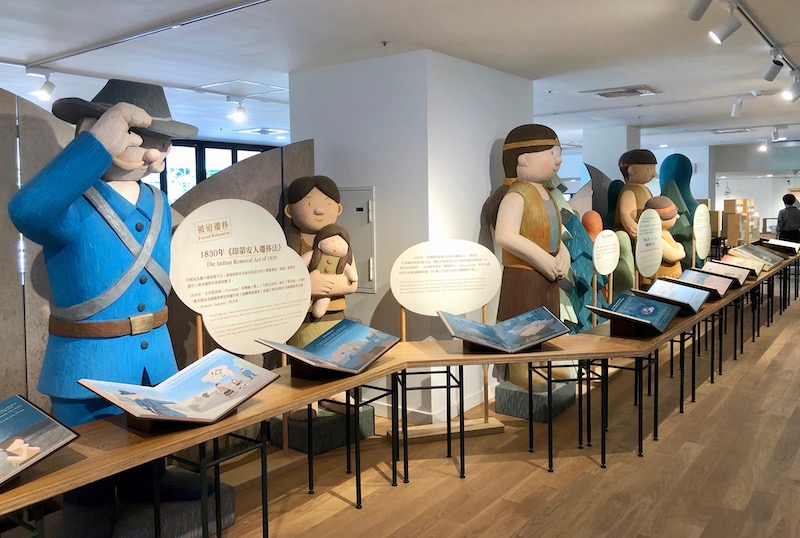
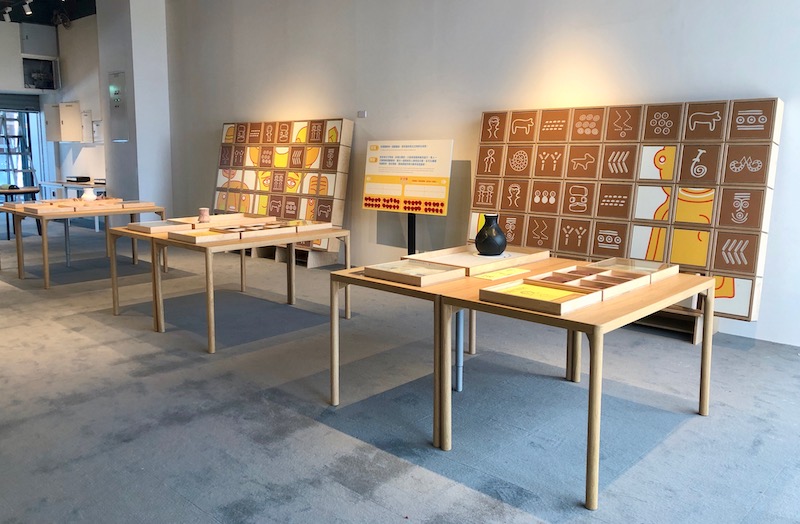
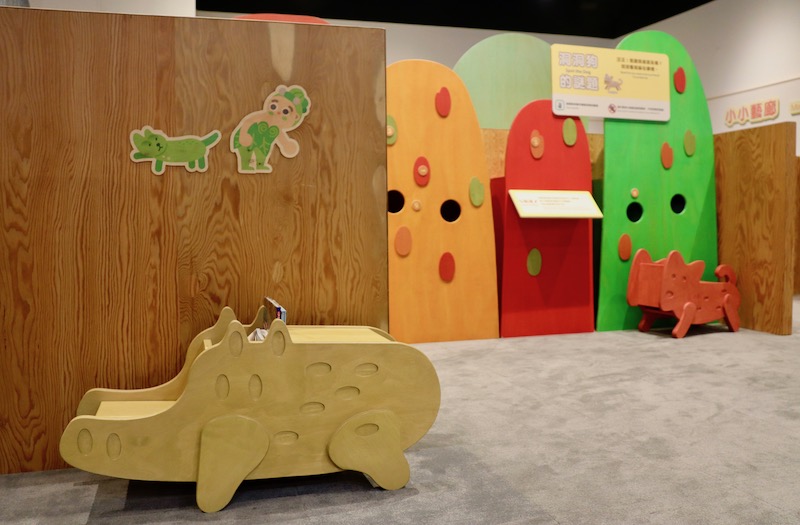
Related Links:
閱讀更多:【國內外資訊】
(本系列文章與文化部博物之島同步刊登)

